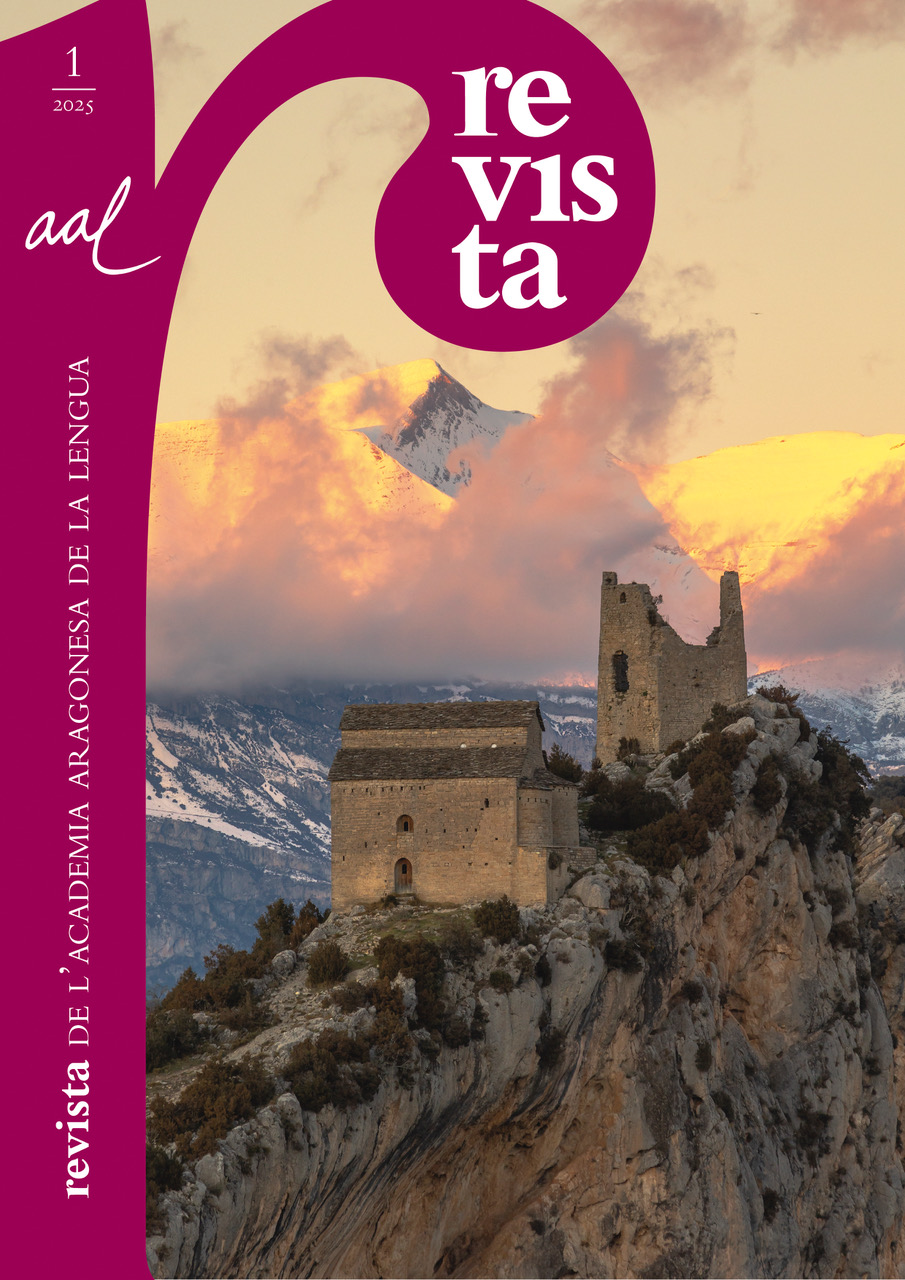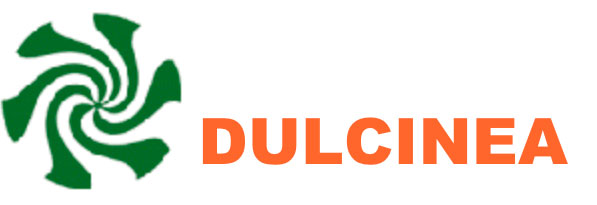Retos y aportaciones de las lenguas de Aragón a la lingüística actual
DOI:
https://doi.org/10.65066/raal.9Keywords:
typology, motion, deixis, ideophone, reduplication, minority language, Aragonese, CatalanAbstract
This article explores the contributions and challenges arising from the mutual interaction between minority languages in WEIRD contexts, such as Aragonese and Catalan, and different areas of contemporary linguistics, such as typology and psycholinguistics. On the one hand, it shows that Aragonese and Catalan diverge from the typological trends proposed for Romance languages in the way elements such as spatial trajectory and deixis are encoded and processed. On the other hand, it highlights the need to update the tools of linguistic description in order to coherently explain phenomena that are less prominent in other Romance languages, such as reduplication or ideophones, but crucial in languages like Aragonese. Finally, some recommendations are made to avoid the invisibility of these languages in typological descriptions, by assuming the homogeneity of the phylogenetic group, and the inadequacy of descriptions of their grammatical features, by underestimating them or explaining them with inappropriate tools.
Downloads
References
Akita, Kimi; Pardeshi, Prashant (eds.) (2019): Ideophones, mimetics, and expressives. Amsterdam: John Benjamins. DOI: https://doi.org/10.1075/ill.16
Ameka, Felix K.; Terkourafi, Marina (2019): "What if…? Imagining non-Western perspectives on pragmatic theory and practice". Journal of Pragmatics, 145, 72-82. DOI: https://doi.org/10.1016/j.pragma.2019.04.001
Amorós-Negre, Carla (2014): La lengua en la sociedad. Madrid: Síntesis.
Ariño-Bizarro, Andrea (2025): Entre causas y efectos: una mirada multidisciplinar de la causalidad en español. Salamanca: Ediciones de la Universidad de Salamanca.
Badenoch, Nathan; Choksi, Nishaant (eds.) (2020): Expressives in the South Asian linguistic area. Leiden: Brill. DOI: https://doi.org/10.1163/9789004439153
Benaiges-Saura, Katia (en proceso): Procesamiento lingüístico y cognitivo del espacio y el movimiento en las lenguas de Aragón. Tesis doctoral. Universidad de Zaragoza.
Benaiges-Saura, Katia; Moret-Oliver, María Teresa; Ibarretxe-Antuñano, Iraide (en prensa): "Se'n va cara la zurda o ve cara mi? La descripció dels parlants d'Aiguaviva (Terol) d'esdeveniments de moviment complexos". En Gregori,
Alfons; Łuczak, Barbara; Pascual-López, Xavier (eds.): Ficció, identitats culturals i usos lingüístics: recerques en estudis catalans. Barcelona: IEC.
Berman, Ruth; Slobin, Dan I. (1994): Relating events in narrative. A crosslinguistic developmental study. Hillsdale: LEA.
Blasi, Damián E.; Henrich, Joseph; Adamou, Evangelia; Kemmerer, David; Majid, Asifa (2022): "Over-reliance on English hinders cognitive science". Trends in Cognitive Sciences, 26(12), 1153-1170. DOI: https://doi.org/10.1016/j.tics.2022.09.015
Dingemanse, Mark (2012): "Advances in the cross-linguistic study of ideophones". Language and Linguistics Compass, 6(10), 654-672. DOI: https://doi.org/10.1002/lnc3.361
Dingemanse, Mark (2023): "Ideophones". En van Lier, Eva (ed.): The Oxford handbook of word classes. Oxford: Oxford University Press, 466-476. DOI: https://doi.org/10.1093/oxfordhb/9780198852889.013.15
Dingemanse, Mark; Blasi, Damián E.; Lupyan, Gary; Christiansen, Morten H.; Monaghan, Padraig (2015): "Arbitrariness, iconicity and systematicity in language". Trends in Cognitive Sciences, 19(10), 603-615. DOI: https://doi.org/10.1016/j.tics.2015.07.013
Estudio de Filología Aragonesa (EFA) (2021): Gramatica basica de l'aragonés. Zaragoza: Prensas de la Universidad de Zaragoza.
Estudio de Filología Aragonesa (EFA) (2023): Diccionario ortografico de l'aragónes (Seguntes la propuesta ortografica de l'EFA). Zaragoza: Edicions Dichitals de l'Academia de l'Aragonés.
Filipović, Luna (2011): "Speaking and remembering in one or two languages: Bilingual vs. monolingual lexicalization and memory for motion events". International Journal of Bilingualism, 15(4), 466-485. DOI: https://doi.org/10.1177/1367006911403062
Gathercole, Virginia C. (1977): "A study of coming and going verbs of the speakers of four languages: Spanish, Japanese, English and Turkish". Kansas Working Papers in Linguistics, 2, 61-94. DOI: https://doi.org/10.17161/KWPL.1808.713
Gathercole, Virginia C. (1978): "Towards a universal for deictic verbs of motion". Kansas Working Papers in Linguistics, 3, 72-88. DOI: https://doi.org/10.17161/KWPL.1808.726
Henrich, Joseph; Heine, Steven J.; Norenzayan, Ara (2010): "The weirdest people in the world". Behavioral Brain Sciences, 33 (2/3), 61e83. DOI: https://doi.org/10.1017/S0140525X0999152X
Hijazo-Gascón, Alberto; Ibarretxe-Antuñano, Iraide (2010): "Tipología, lexicalización y dialectología aragonesa". Archivo de Filología Aragonesa, 66, 245-280.
Hijazo-Gascón, Alberto; Ibarretxe-Antuñano, Iraide (2013): "Las lenguas románicas y la tipología de los eventos de movimiento". Romanische Forschungen, 125(4), 467-494. DOI: https://doi.org/10.3196/003581213808754483
Ibarretxe-Antuñano, Iraide (2004): "Language typologies in our language use: the case of Basque motion events in adult oral narratives". Cognitive Linguistics, 15(3), 317-349. DOI: https://doi.org/10.1515/cogl.2004.012
Ibarretxe-Antuñano, Iraide (2009) "Path salience in motion events". En Guo, Jiansen; Lieven, Elena; Budwig, Nancy; S. Ervin-Tripp, Susan; Nakamura, Keiko; Özçaliskan, Seyda (eds.): Crosslingüistic approaches to the psychology of language. Nueva York: Psychology Press, 403-414.
Ibarretxe-Antuñano, Iraide (2015): "Going beyond motion events typology: The case of Basque as a verb-framed language". Folia Linguistica, 49(2), 307-352. DOI: https://doi.org/10.1515/flin-2015-0012
Ibarretxe-Antuñano, Iraide (2017): "Basque ideophones from a typological perspective". The Canadian Journal of Linguistics / Revue canadienne de linguistique, 62(2), 196-220. DOI: https://doi.org/10.1017/cnj.2017.8
Ibarretxe-Antuñano, Iraide (2021a): "Érase una vez… la estandarización de la lengua". Revista Archiletras, 13, 58-59.
Ibarretxe-Antuñano, Iraide (2021b): "De los hablantes a las lenguas pasando (o no) por la estandarización: un camino de ida y vuelta". Ponencia plenaria en el II Seminario Internacional de Sociolingüística. Universidad de Alicante, Alicante (España). Mayo 2021.
Ibarretxe-Antuñano, Iraide (2022): "El papel de los ideófonos en el paisaje lingüístico bilingüe". Comunicación en el I Congreso Internacional de Paisaje Lingüístico. Universidad Pablo de Olavide, Sevilla (España). Noviembre 2022.
Ibarretxe-Antuñano, Iraide (2023): "Vindicating the role of ideophones as a typological feature of Basque". En Williams, Joseph P. (ed.): Expressivity in European languages. Cambridge: Cambridge University Press, 313-334. DOI: https://doi.org/10.1017/9781108989084.016
Ibarretxe-Antuñano, Iraide (2025). "The interaction of motion event (sub)components in Spanish motion verbs". En Matsumoto, Yo (ed.): Motion event descriptions across languages. Volume 1: Case studies of linguistic representations of motion. Berlín: Mouton de Gruyter, 285-313. DOI: https://doi.org/10.1515/9783110690866-008
Ibarretxe-Antuñano, Iraide (en prensa): "The segmentals and suprasegmentals of ideophones". En Fischer, Olga; Akita, Kimi; Perniss, Pamela (eds.): The Oxford handbook of iconicity in language. Oxford: Oxford University Press.
Ibarretxe-Antuñano, Iraide; Hijazo-Gascón, Alberto (2012): "Variation in motion events: Theory and applications". En Filipović, Luna; Jaszcolt, Kasia M. (eds.): Space and time across languages and cultures, Volume I: Linguistic diversity. Ámsterdam: John Benjamins, 349-371. DOI: https://doi.org/10.1075/hcp.36.19iba
Ibarretxe-Antuñano, Iraide; Hijazo-Gascón, Alberto; Moret-Oliver, María Teresa (2017): "The importance of minority languages in motion event typology: The case of Aragonese and Catalan". En Ibarretxe-Antuñano, Iraide (ed.): Motion and space across languages and applications. Ámsterdam: John Benjamins, 123-149. DOI: https://doi.org/10.1075/hcp.59.06iba
Ibarretxe-Antuñano, Iraide; Moret-Oliver, María Teresa; Ariño-Bizarro, Andrea (2024): "Ideophones in Aragonese: A typological description". Comunicación en el 21st International Congress of Linguists (ICL). Poznań (Polonia). Septiembre 2024.
Ibarretxe-Antuñano, Iraide; San Segundo-Cachero, Rosabel (2024): "El asturiano en la tipología semántica del movimiento". Dialectologia, special issue 14, 41-65. DOI: https://doi.org/10.1344/Dialectologia2024.2024c.2
Ibarretxe-Antuñano, Iraide; Valenzuela, Javier (2021): Lenguaje y cognición. Madrid: Síntesis.
Igartua, Iván (2023): Fundamentos de tipología lingüística. Madrid: Síntesis.
Inkelas, Sharon; Downing, Laura J. (2015): "What is reduplication? Typology and analysis. Part 1/2: The typology of reduplication". Language and Linguistics Compass, 9(12), 502-515. DOI: https://doi.org/10.1111/lnc3.12166
Kirk, Neil W. (2022): "MIND your language(s): Recognizing minority, indigenous, non-standard(ized), and dialect variety usage in «monolinguals»". Applied Psycholinguistics, 44, 358-364. DOI: https://doi.org/10.1017/S0142716422000467
Kloss, H. (1967): "Abstand languages and ausbau languages". Anthropological Linguistics, 9(7), 29-41.
Körtvélyessy, Livia; Štekauer, Pavel (eds.) (2024): Onomatopoeia in the world's languages. Berlín: Mouton de Gruyter. DOI: https://doi.org/10.1515/9783111053226
Lucy, John A. (1997): "Linguistic relativity". Annual Review of Anthropology, 26, 291-312. DOI: https://doi.org/10.1146/annurev.anthro.26.1.291
Matsumoto, Yo (2025): Motion event descriptions across languages. Volume 1: Case studies of linguistic representations of motion. Berlín: Mouton de Gruyter. DOI: https://doi.org/10.1515/9783110690866-001
Moreno Cabrera, Juan Carlos (2000): La dignidad e igualdad de las lenguas. Crítica de la discriminación lingüística. Madrid: Alianza.
Moret-Oliver, María Teresa; Ibarretxe-Antuñano, Iraide (2018): "Una aproximación desde la tipología semántica a la deixis ("ir" y "venir") en aragonés y catalán medieval". En Arnal Purroy, María Luisa; Castañer Martín, Rosa María; Enguita Utrilla, José M.ª; Lagüéns Gracia, Vicente; Martín Zorraquino, María Antonia (eds.): Actas del X Congreso Internaciona de Historia de la Lengua Española. Zaragoza: Institución Fernando el Católico, 2144-2158.
Nagore Laín, Francho (1989): Gramática de la lengua aragonesa. Zaragoza: Mira Editores.
Newmeyer, Friedich (1993): "Iconicity and generative grammar". Language, 68, 756-796. DOI: https://doi.org/10.1353/lan.1992.0047
Ngué Um, Emmanuel (2020): "Had Ferdinand de Saussure spoken Wolof or Basaa..., the discipline of linguistics would have fared". Language, Culture and Society, 2(1), 107-115. DOI: https://doi.org/10.1075/lcs.00022.ngu
Rubino, Carl (2013): "Reduplication". En Dryer, Matthew S.; Haspelmath, Martin (eds.): WALS Online (v2020.4) [Data set]. Zenodo. https://doi.org/10.5281/zenodo.13950591 [18.11.2024].
Saura Rami, José Antonio (2022): "El ribagorzano: lengua románica autónoma del Pirineo central". eHumanista/IVITRA 22, 429-450.
Saussure, Ferdinand de (1916): Cours de linguistique générale. Editado por Bally, Charles; Sechehaye, Albert; Riedlinge, Albert. Lausanne: Payot.
Schwaiger, Thomas (2015): "Reduplicacion". En Müller, Peter O.; Ohnheiser, Ingeborg; Olsen, Susan; Rainer, Franz (eds.): Word-formation: An international handbook of the languages of Europe. Berlín: De Gruyter Mouton, 467-484.
Slobin, Dan I. (1996): "Two ways to travel: Verbs of motion in English and Spanish". En Shibatani, Masayoshi; Thompson. DOI: https://doi.org/10.1093/oso/9780198235392.003.0008
Sandra A. (eds.): Grammatical constructions: Their form and meaning. Oxford: Clarendon Press, 195-317.
Slobin, Dan I. (2004): "The many ways to search for a frog: Linguistic typology and the expression of motion events". En Strömqvist, Sven; Verhoeven, Ludo (eds.): Relating events in narrative: Typological and contextual perspectives. Mahwah, N.J.: LEA, 1-32.
Slobin, Dan I. (2006): "What makes Manner of motion salient? Explorations in linguistic typology, discourse and cognition". En Hickmann, Maya; Robert, Stéphane (eds.): Space in languages: Linguistic systems and cognitive categories. Ámsterdam: John Benjamins, 59-82. DOI: https://doi.org/10.1075/tsl.66.05slo
Talmy, Leonard (1985): "Lexicalization patterns: Semantic structure in lexical forms". En Shopen, Timothy (eds.): Language typology and syntactic description. Vol. 3: Grammatical categories and the lexicon. Cambridge: Cambridge University Press, 57-149.
Talmy, Leonard (1991): "Path to realization: A typology of event conflation". Proceedings of the Seventeenth Annual Meeting of the Berkeley Linguistic Society, 17, 480-519. DOI: https://doi.org/10.3765/bls.v17i0.1620
Talmy, Leonard (2000): Toward a cognitive semantics. Cambridge, MA: The MIT Press. DOI: https://doi.org/10.7551/mitpress/6847.001.0001
Tomás Arias, Javier (2019): Elementos de lingüística contrastiva en aragonés. Estudio de algunas afinidades con gascón, catalán y otros romances. Tesis doctoral. Universitat de Barcelona.
Tomás Faci, Guillermo (2020): El aragonés medieval. Lengua y estado en el reino de Aragón. Zaragoza: Prensas de la Universidad de Zaragoza.
Ünal, Ercenur; Mamus, Egzi; Özyürek, Aslı (2024): "Multimodal encoding of motion events in speech, language and cognition". Language & Cognition, 16(4), 785-804. DOI: https://doi.org/10.1017/langcog.2023.61
Unesco (2003): "Vitalidad y peligro de desaparición de las lenguas: grupo especial de expertos sobre las lenguas en peligro convocado por la UNESCO". <https://unesdoc.unesco.org/ark:/48223/pf0000183699_spa > [19.01.2025].
Williams, Jeffrey P. (ed.) (2023): Expressivity in European languages. Cambridge: Cambridge University Press. DOI: https://doi.org/10.1017/9781108989084
Downloads
Published
Issue
Section
License
Copyright (c) 2025 Iraide Ibarretxe Antuñano

This work is licensed under a Creative Commons Attribution-NonCommercial-NoDerivatives 4.0 International License.













